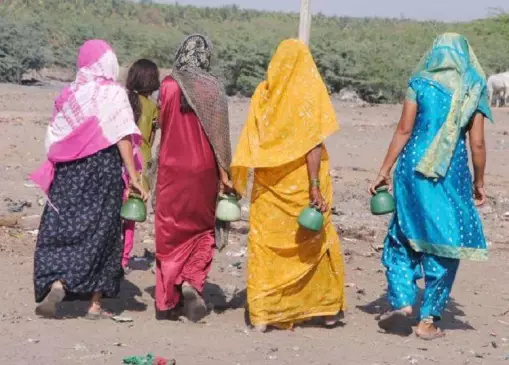There is smoke in the toilet in India. The government has set a price of $ 2000 million. The goal of the Indian government is to ensure that people do not have to break into the open space by the year 2019.
According to the BBC, an organization working on social projects has taken the challenge of making public toilets in one of the poorest areas of India. The company is spending the cost of toilet towel from toilets.
More than 50 million people do not use toilets in India's rural areas. Many types of healthy and social problems are created due to stools in the open space. Because of this, children can not go to school and when they go to solitary places to move, women are not affected or afraid of being attacked.
As well as government initiatives, the agencies like Sanitation and Health Rights in India (SRI) have come forward to solve the problem through innovative ways.
Cost of running the toilet
When one of the founders of the talented Prabin Kumar used to go to school, he often had to go to school, because he had to walk more than a kilometer to go for the exit of the river.
The three entrepreneurs who are preparing toilets for free of cost in India's Bihar state, Prabin Kumar is one of them.
There is a big problem in the state-run toilets to clear waste and keep the toilets clean.
Instead of removing the waste, the toilet will send that waste into a biological treatment machine or bio-digester.
The energy that comes from the machine-powered electricity is pumped with water. The water filter is processed by bottling it and the bottle water is sold at 50 paisa. The cost of selling the water is to increase the cost of clean and toilets. Mr. Shrinivharan, who is distributing every day, sells 3000 liters of water.
Community toilets
Anappa Jain, an engineer born in Canada in 2010 with the name of Praveen Kumar and his teammate Chandan Kumar, was introduced.
Four years later, in the village of Nemua in the state of Bihar state, they made toilet for the first community toilet or for everyone's use.
There are eight toilets for the public toilets and eight toilets for girls. At four o'clock in the morning, the school is opened and closed at ten in the night.
Their team has set up toilets in five villages so far. They say they have used toilet 800 times per day.
According to their estimates, initially, the cost of building each school is approximately 30 thousand dollars. After the construction is done, the expenditure on the sale of bottled water from the sale of the toilet comes with the cost of running the toilet.
'We chose villages where no toilet was made in the government sense', said Chandan Kumar. Before construction of the toilets, they started working in the village to raise awareness.
Because the culture of the people of these villages has been practiced so long, breaking the culture is the most important. They do not have toilets, they are the real challenges of encouraging them to use them.
Spirited outlook
We are more dependent on those who are bringing new ideas, "said Nicholas Asbart of UNICEF India.
They are thinking of innovating new ways to solve problems, keeping them in mind, from the point of view of engineering, and also encouraging people on the issue of holistic health.
Asbart says, although the innovation of Bio-Dijestar is quite novel, he is skeptical of how successful this invention can be used to take this project to a more broad range.
However, Sri Toilet innovators are more aspiring. 'We want to work with the government and where the government has not done anything yet we are thinking of installing this toilet' - says Jain
'We want to get government funding to build more toilets.'
'The people of the village or the area will run these toilets. Mr will ensure that they are being used and their proper look is being done. '
His co-founder Chandan Kumar also agreed, "We want our initiative to be useful to our society and we want to see that hundreds of percentages of publications have been discontinued in the open space."
 hiveblocks
hiveblocks